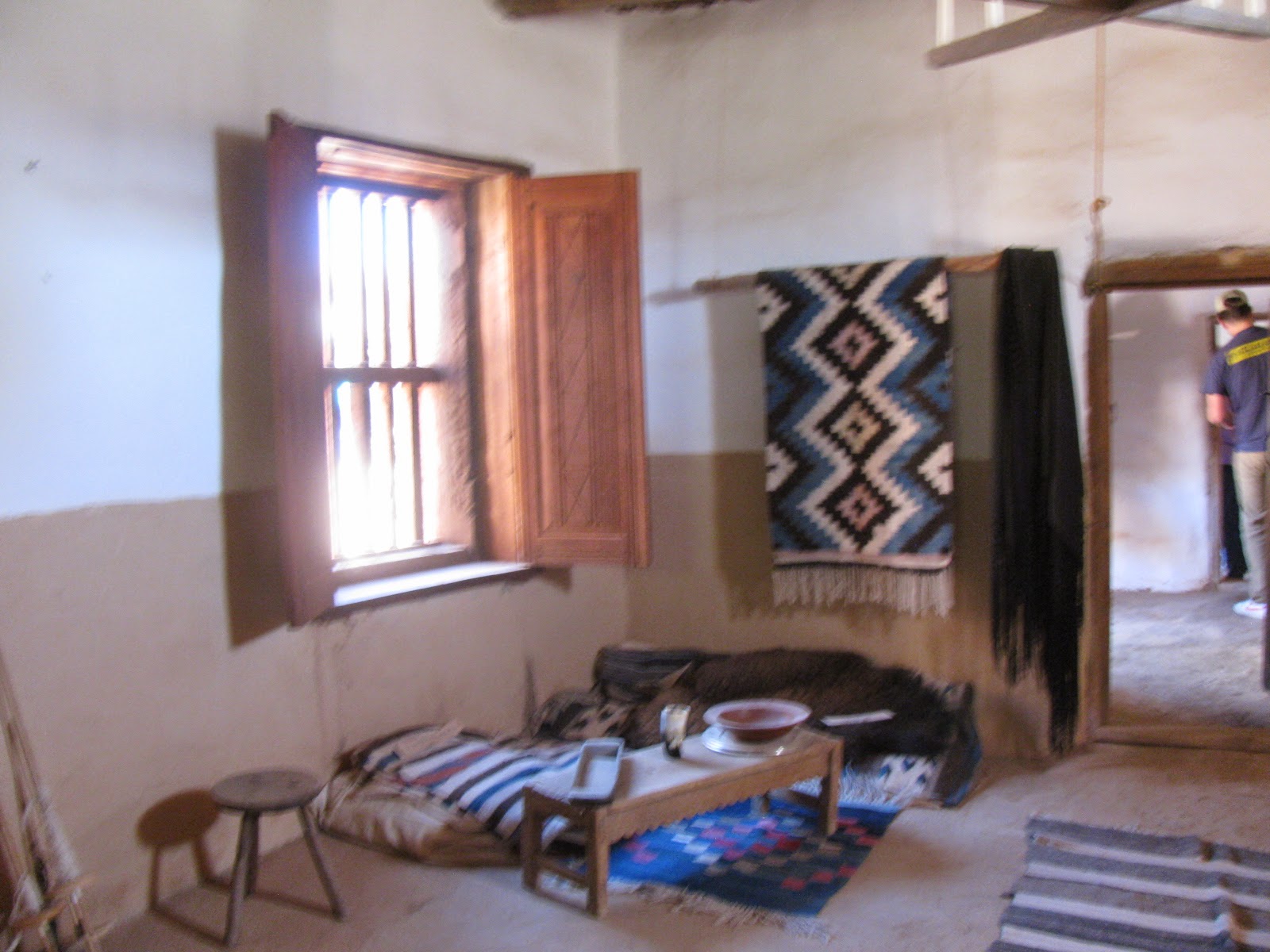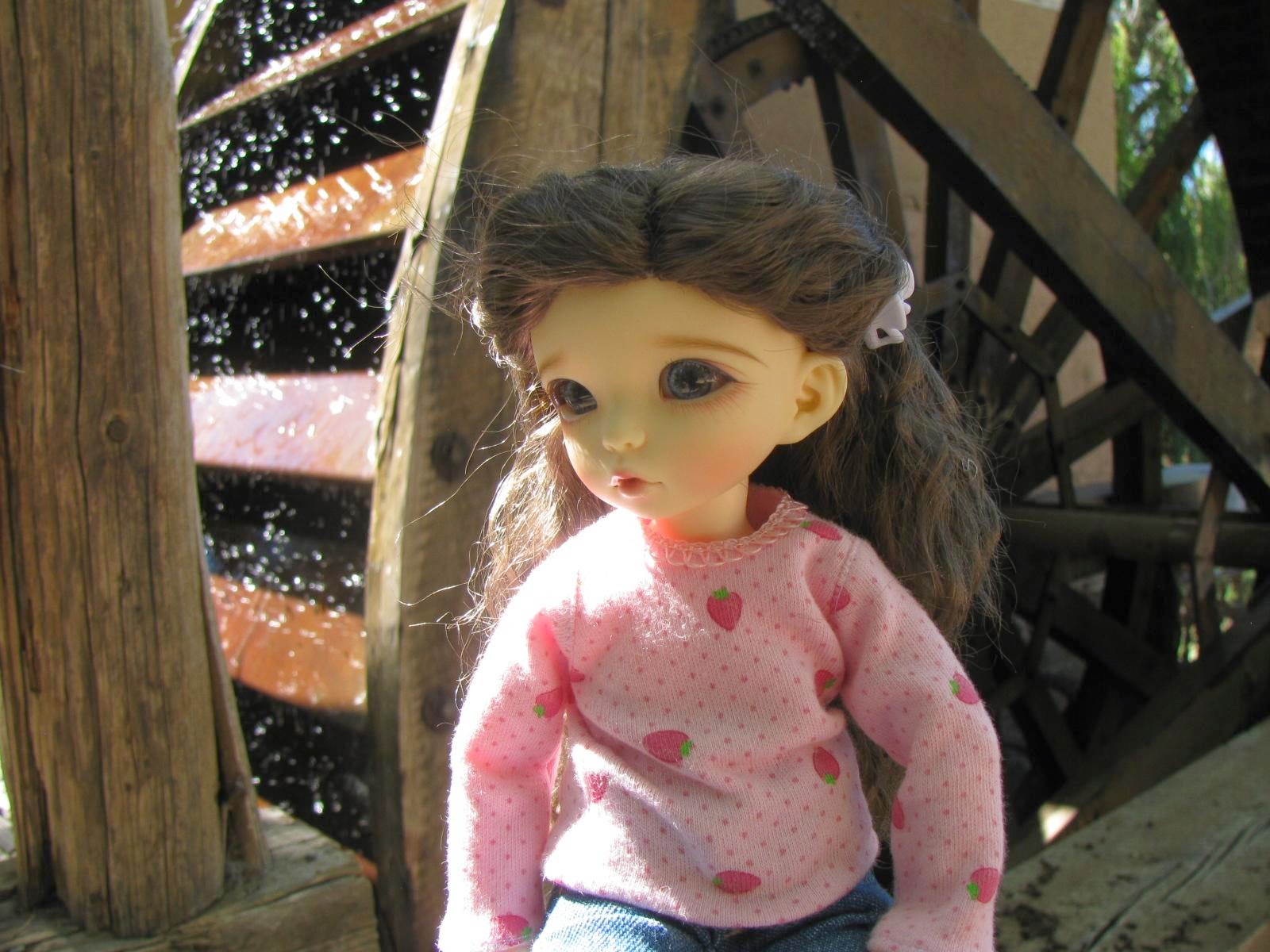El Rancho de Las Golondrinas
is a living history museum south of Santa Fe.
It was originally a stagecoach stop on the
El Camino Real.
After a long term possession by a private family,
it was restored and established as living history museum.
The museum has event weekends from May through October.
This weekend is the Harvest Festival,
marking the end of the season.
El Rancho de Las Golondrinas
consists of a main rancho building
with a number of outbuildings around the property.
The main rancho shows how Spanish colonial families
may have lived in their ranchos.
Ox carts were used to carry trade merchandise
up and down the El Camino Real between
Mexico City and Santa Fe.
Step through the gate and come inside to the courtyard!
The Harvest Festival is one of their busiest events,
and with the beautiful weather,
today was no exception.
I had to give up on photographing the property without extra people!
Hornos are a traditional outdoor oven for baking bread.
Red chiles were being wrapped into ristras.
They are commonly used as home decorations in New Mexico,
but were originally a way to dry and store red chile for seasoning.
Inside the box-shaped rooms in the rancho,
there were items that could have been used in every day life.
The process of raising sheep, shearing wool,
washing, dying, spinning and weaving wool
was important to the colonists to produce
woven products like rugs, blankets, and some clothing.
Colcha was a traditional style of embroidery
that was used to make finer items like altar clothes
and women's shawls.
This volunteer is weaving a piece of cloth
that would have been used as a backing for colcha embroidery.
El Rancho de Las Golondrinas
has several fine colcha samples on the walls, altar cloths,
and as bedspreads.
This video clip, filmed at El Rancho de Las Golondrinas,
has more about colcha embroidery as shared by a museum volunteer.
Outside of the weaving rooms,
a group of volunteers spun and carded wool into yarn.
The gentleman also told a few "yarns" about New Mexico history.
Abby, the young lady, said that she enjoyed spinning wool,
and could do it for several hours.
Ella was overjoyed to find a pumpkin patch!
It was on top of a food storage shed!
The sheep were in the back of the stall,
providing a photo opportunity with sheep
and the adobe tower, known as a torreon!
Once the wool was sheared in early New Mexico,
it was washed with sudsy yucca root!
The volunteer who had been working with the bread baked in the horno
had brought it to this quieter table for people to taste the bread.
She had several spreads to put on the bread, including pumpkin or chile.
The Baca House
is to the side of the main rancho.
It is from a slightly later era.
Down the hill is the Raton School House.
It was rescued from the town of Raton.
It has an early school room with a teacher's room
and a dye shack on the side.
"Do you mind if I photograph you with my doll?
I am doing 'A Doll A Day' photo project.
I am doing 'A Doll A Day' photo project.
It is based on the alphabet, and today is 'D'.
I figured a docent was more interesting than a door."
" 'Dye' starts with 'D'.
Why don't you photograph her with the red dye.
Why don't you photograph her with the red dye.
It should be dry."
Today was my lucky day!
I knew there had to be something here
that would start with 'D'!
So.... D is for the Docent Discussing Dye!
 |
| ADAD 4: 10/4/14 |
Even though the official Civil War event weekend is in May,
a few Civil War re-enactors camped in a small glen.
The trees had leaves that were turning yellow,
and falling the breeze!
Yippee!
Yippee!
Fall Leaves!
Ella enjoyed playing in the leaves,
and then a spider crept up beside her!
Fortunately, she was not Miss Muffet,
and stayed quite put in the leaves while the spider moved on.
Then, the men set the cannon up,
and after a time of preparation,
fired a blank.
It was loud!
On to the mill!
After listening the rattling of the mill wheel,
we visited the pond behind the mill.
We walked on past the Sierra House,
a later era ranch style house.
As we hiked back up the hill toward the main area,
we stopped at a smaller mill.
The acequia runs throughout the property
as an irrigation ditch.
This section is diverted into cut out log canals
used to activate the mill wheel.
The turning wheel activates the jolting grinding and sifting movement.
We continued our way up the hill,
toward the main rancho and exit.
It was near closing time,
and many of the crowds had already left.
We're leaving?
Can we come back sometime?
Not until next spring.
Can we look in the gift shop?
You didn't tell me Josefina lives here!
Something like that.
Adios! See you next year!












































































































Wow, what a wonderful day! You and Ella got se great pictures and it looks like you had so much fun--living history sites are the best! Thanks for sharing some New Mexico history!
ReplyDeleteWhat a great post, you go to some really wonderful and interesting places. Fabulous.
ReplyDelete